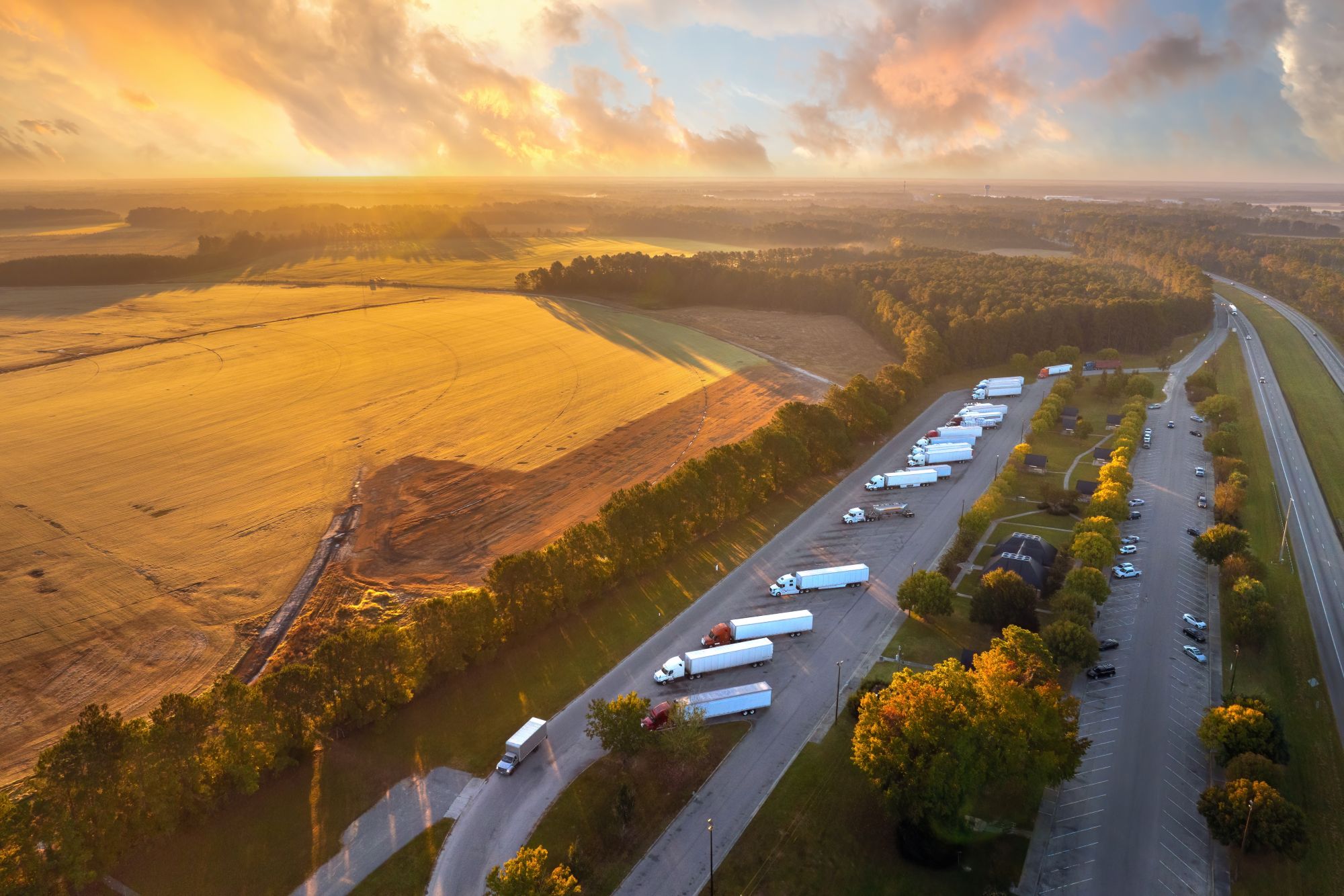
Miranda Blake
Consejos para mantener seguro su vehículo: Proteja su camión de los robos
Creado: 14/11/2024
•
Actualizado: 14/11/2024
Las empresas de transporte del Reino Unido y Europa pueden reducir considerablemente el riesgo de robo de vehículos y mercancías. Proteger el camión no consiste sólo en asegurar el propio vehículo; implica un enfoque holístico que incluye tecnología, formación, compromiso con la comunidad y planificación proactiva. Con las medidas adecuadas, los gestores de flotas pueden garantizar la seguridad de los conductores y la integridad de los activos, fomentando un entorno seguro para sus operaciones.
Lo que deben hacer los conductores
Asegurar el vehículo
Aumente la seguridad de su vehículo empleando diversos dispositivos, como candados, precintos con numeración única y cordones basculantes. Deben aplicarse inmediatamente después de la carga para crear una capa adicional de protección contra el acceso no autorizado.
Es esencial realizar comprobaciones minuciosas. Después de cada parada, dedique un momento a inspeccionar el camión y su carga. Busque cualquier signo de manipulación o actividad sospechosa. La vigilancia es fundamental para evitar incidentes de robo.
Documentación
Mantener una lista completa de comprobación de la seguridad del vehículo. Debe estar fácilmente disponible para que la revisen los agentes de la Fuerza de Fronteras u otras autoridades cuando sea necesario. Esto no sólo demuestra su compromiso, sino que también ayuda en el proceso de investigación en caso de robo.
Lugares seguros
Opte por aparcamientos bien iluminados y concurridos. Las zonas con mucho tráfico peatonal y cámaras de vigilancia son menos atractivas para los ladrones. Siempre que sea posible, utilice zonas de aparcamiento seguras, equipadas con vallas perimetrales y sistemas avanzados de vigilancia o personal de seguridad. Estos lugares proporcionan un nivel de seguridad añadido. Para aparcar por la noche, elija lugares iluminados y vigilados.
Encuentre aparcamiento seguro para camiones en su ruta de tránsito utilizando el mapa SNAP.
Tecnología y equipamiento
La incorporación de tecnología avanzada puede reforzar considerablemente la seguridad de su vehículo. Equipe su camión con sistemas modernos, como localización por GPS, inmovilizadores y alarmas antipánico. Estos sistemas no solo disuaden del robo, sino que también ayudan a recuperarlo en caso de incidente.
Planificación de rutas
Además, trazar sus trayectos con eficacia puede ayudarle a evitar las zonas de alto riesgo. Utiliza programas informáticos que te permitan trazar rutas de reparto evitando los puntos conflictivos de robo de mercancías. Mediante la implantación de la telemática y la tecnología GPS para controlar el vehículo en tiempo real, podrás seguir su ubicación y garantizar el cumplimiento de los trayectos planificados.
Qué deben hacer los operadores de flotas
Protocolos y sistemas de seguridad
Un conjunto bien definido de protocolos de seguridad es esencial para todos los conductores. Como operador de flota, puede proporcionar directrices exhaustivas por escrito que detallen las medidas de seguridad que deben seguir. Este enfoque garantiza que todo el mundo esté de acuerdo con las prácticas de seguridad.
Debe formar a los conductores sobre cómo utilizar eficazmente los sistemas instalados en sus camiones. Familiarizarse con estos dispositivos puede aumentar su eficacia. También es una buena idea educarles sobre las amenazas potenciales y la importancia de la vigilancia. Deben conocer las tácticas habituales de los ladrones y cómo responder adecuadamente.
Mantener sus camiones en condiciones óptimas reduce el riesgo de averías que podrían dar lugar a robos. Implemente un programa de mantenimiento proactivo para garantizar que sus vehículos estén siempre en buen estado de funcionamiento. Las revisiones periódicas pueden evitar averías mecánicas que dejen vulnerables a tus camiones.
Comunicación y comunidad
Establecer canales de comunicación claros es vital para una gestión eficaz de la seguridad. Mantenga una comunicación abierta entre conductores, expedidores y personal de seguridad. Esto permite informar inmediatamente de cualquier actividad sospechosa o problema con el vehículo. Anime a los conductores a que se registren periódicamente a lo largo de sus turnos.
Comprometerse con la comunidad local puede mejorar sus medidas de seguridad. Colabore con otras empresas y con las fuerzas de seguridad locales para compartir información sobre posibles amenazas. Un enfoque colectivo puede aumentar la concienciación y dar lugar a estrategias de prevención de la delincuencia más eficaces. Participe en iniciativas de la comunidad centradas en este tema: el establecimiento de relaciones puede crear una red de apoyo que ayude a proteger sus activos.
Planes de respuesta
Disponer de un plan sólido para emergencias puede mitigar los efectos de los robos. Desarrolle protocolos claros para responder a los incidentes. Debe incluir los pasos para denunciarlo, ponerse en contacto con las fuerzas de seguridad y notificarlo a su proveedor de seguros. Asegúrese de que todos los conductores estén familiarizados con ellos: deben saber cómo actuar con rapidez y eficacia.
Situational awareness
Formar a los conductores para que sean conscientes de lo que les rodea puede evitar los robos. Enséñeles a identificar actividades sospechosas en torno a sus vehículos y anímeles a confiar en su instinto e informar de cualquier suceso inusual. Además, insista en la importancia de dar prioridad a la seguridad personal sobre la carga. Si se enfrentan a un ladrón, deben obedecer y denunciar el incidente a las autoridades en cuanto sea seguro hacerlo.
Control de las transacciones de combustible con SNAP
Ofrecemos un sistema de pago inteligente que registra y realiza un seguimiento automático de las transacciones de combustible. Cuando los conductores repostan sus vehículos en cualquiera de los más de 3.500 puntos del Reino Unido, solo tienen que presentar su tarjeta SNAP Fuel para pagar la transacción, lo que elimina la necesidad de efectivo o tarjetas de crédito, agilizando el proceso.
El sistema añade automáticamente cada transacción de combustible a la cuenta asociada al número de matrícula del vehículo. Esta automatización elimina la necesidad de que los conductores recojan y presenten manualmente los recibos, lo que reduce la carga administrativa y la posibilidad de errores.
Los gestores de flotas reciben facturas mensuales desglosadas que ofrecen una visión detallada de la actividad de todos sus vehículos, lo que permite controlar fácilmente el consumo de combustible y el gasto de toda la flota.
SNAP Fuel se integra con otros servicios de la Cuenta SNAP, lo que permite a los gestores de flotas controlar no sólo las transacciones de combustible, sino también los servicios de aparcamiento y lavado en una única cuenta, proporcionando una visión completa de las operaciones y los gastos. Más información sobre SNAP Fuel aquí.



